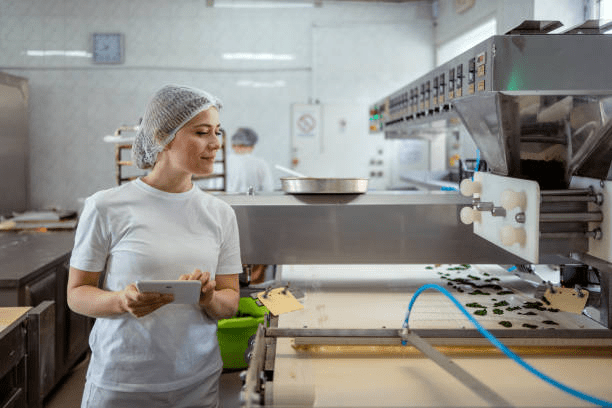
The food industry has always been a cornerstone of the global economy, ensuring the sustenance and health of billions. With the advent of digital transformation, the integration of software development in the food industry has revolutionized the way businesses operate, bringing about significant improvements in efficiency, safety, and customer satisfaction. This article delves into the various aspects of software development tailored for the food industry, including IT audits of food and beverage software and the modernization of legacy applications.
The Role of Software Development in the Food Industry
Enhancing Operational Efficiency
In the highly competitive food industry, operational efficiency is paramount. Software solutions can automate routine tasks such as inventory management, order processing, and supply chain logistics. By doing so, businesses can reduce manual errors, save time, and cut costs. For instance, advanced inventory management systems can track stock levels in real time, forecast demand, and automatically reorder supplies, ensuring that businesses never run out of essential ingredients.
Ensuring Food Safety and Compliance
Food safety is a critical concern for both consumers and regulatory bodies. Software solutions designed for the food industry can help businesses comply with stringent food safety regulations. These systems can monitor and record temperature controls, track the traceability of ingredients, and manage compliance documentation.
Improving Customer Experience
Customer satisfaction is vital in the food industry. Software solutions such as customer relationship management (CRM) systems can help businesses understand customer preferences, manage orders efficiently, and provide personalized services. Additionally, mobile apps and online ordering systems offer customers the convenience of browsing menus, placing orders, and making payments from their devices, enhancing their overall experience.
IT Audit of Food and Beverage Software
Importance of IT Audits
An IT audit is an essential process that evaluates the effectiveness and security of an organization’s information systems. In food and beverage software development, an IT audit ensures that the software systems in use are reliable, secure, and compliant with industry standards.
Key Areas of Focus
Security and Data Protection
One of the primary concerns in any IT audit is security. The audit assesses whether the software systems have adequate measures in place to protect sensitive data, such as customer information and proprietary recipes, from cyber threats. This includes evaluating the effectiveness of firewalls, encryption methods, and access controls.
System Performance and Reliability
The audit also examines the performance and reliability of the software systems. This involves checking for system downtime, response times, and the ability to handle peak loads. Reliable software systems are crucial for ensuring uninterrupted operations, especially during busy periods.
Compliance with Regulations
Food and beverage companies must comply with various regulations, such as the Food Safety Modernization Act (FSMA) and the Hazard Analysis Critical Control Point (HACCP) standards. The IT audit verifies that the software systems are configured to meet these regulatory requirements and can generate the necessary compliance reports.
Benefits of IT Audits
Conducting regular IT audits helps food and beverage companies identify vulnerabilities, improve system performance, and ensure compliance with regulations. This proactive approach can prevent costly security breaches, enhance operational efficiency, and maintain customer trust.
Legacy Applications Modernization
Benefits of Modernizing Legacy Applications
Improved Functionality and Efficiency
Modernizing legacy applications can significantly enhance their functionality and efficiency. Newer systems can integrate seamlessly with other business applications, enabling streamlined workflows and real-time data sharing. This integration improves decision-making and operational efficiency.
Enhanced Security
Legacy systems may have outdated security features that leave them vulnerable to cyber-attacks. Modernizing these systems with the latest security technologies can protect sensitive data and ensure compliance with current security standards.
Scalability and Flexibility
Modern software solutions are designed to be scalable and flexible, allowing businesses to adapt to changing market conditions and customer demands. By modernizing legacy applications, food and beverage companies can quickly scale their operations and introduce new features or services.
Steps to Modernize Legacy Applications
Assessment and Planning
The first step in modernizing legacy applications is to conduct a thorough assessment of the existing systems. This involves identifying the limitations, assessing the business needs, and planning the modernization strategy. The goal is to determine the most cost-effective and efficient approach to upgrade the systems.
Choosing the Right Technology
Selecting the appropriate technology is crucial for successful legacy applications modernization. This could involve migrating to a cloud-based platform, adopting microservices architecture, or implementing new programming languages and frameworks. The chosen technology should align with the company’s long-term goals and provide a robust foundation for future growth.
Implementation and Testing
The implementation phase involves developing and integrating the new system components. Rigorous testing is essential to ensure that the modernized applications function correctly and meet the business requirements. This includes functional testing, performance testing, and security testing.
Training and Support
Once the modernized applications are deployed, it is important to provide adequate training and support to the users. This ensures that the staff can effectively use the new systems and leverage their full capabilities. Ongoing support and maintenance are also necessary to address any issues that may arise and to keep the systems up-to-date.
Conclusion
The integration of software development in the food industry has brought about transformative changes, enhancing operational efficiency, ensuring food safety, and improving customer experiences. Conducting regular IT audits and modernizing legacy applications are crucial steps in maintaining robust, secure, and compliant systems.


